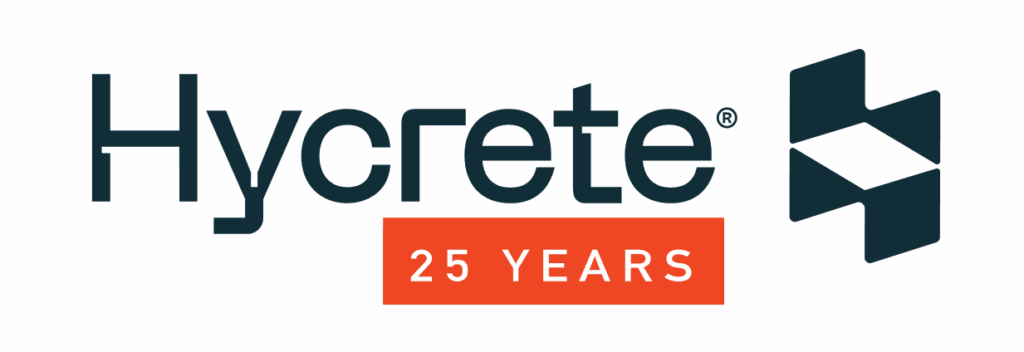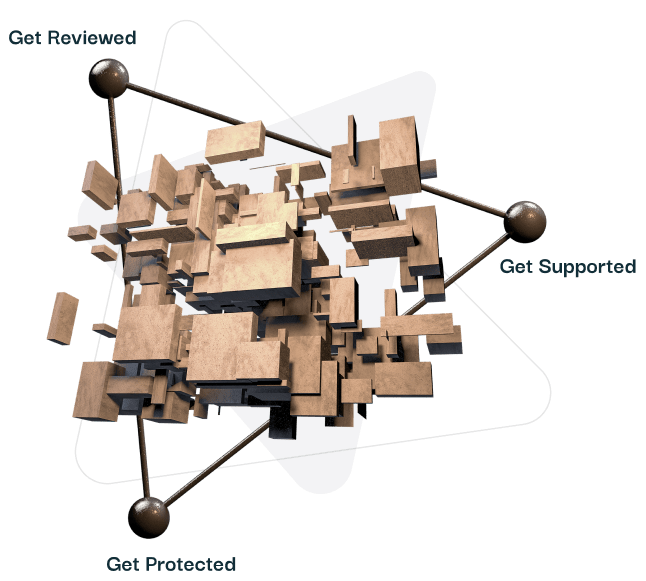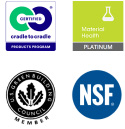Waterproof membranes have become somewhat of a default solution for protecting concrete structures from external water damage. That’s no surprise, considering membranes have generally seen the most widespread use amongst concrete waterproofing methods. But like many conventional assumptions in construction, some of things people believe about membranes are simply outdated – especially when compared to the more modern advancements in hydrophobic admixture technology.
At Hycrete, we believe in challenging assumptions throughout the built environment, helping align what the industry thinks with what the real-world data supports. Of course, we also want to highlight how our integral approach to concrete waterproofing stands apart. With that in mind, let’s walk through a few of the biggest myths, separate the facts, and show how Hycrete offers a truly effective alternative to applied membranes – with lower overall costs, and typically much better long-term results.
Are applied membranes really the most reliable method for waterproof concrete?
Fiction: Proven waterproofing performance you can see and touch.
Membranes are seemingly simple and they’re tangible: sheet membranes, spray-applied membranes, bituminous layers, etc. They’ve been in use a relatively long time, the performance is easy to understand, and they can be visually inspected during installation. That makes many designers more comfortable specifying them because applied membranes seem more proven, and/or feel more controllable than Hycrete’s chemistry hidden within the concrete mix.
Fact: Performance heavily depends on installation and ongoing maintenance.
In reality, the long-term performance of membranes is heavily dependent on perfect installation – seam detailing, adhesion, laps, cure conditions, substrate preparation, to name a few parameters. Slight errors or damage during the process can compromise performance from the start. Likewise, any damage over time will let water and corrosion through. Staying on top of that means complex, costly maintenance on your end.
Compare that to Hycrete with its integral waterproofing: no membranes to see, touch, repair, or maintain because it’s directly within the concrete admixture. In other words, Hycrete essentially makes the concrete material itself waterproof.
Aren’t membranes the simplest and easiest to specify waterproofing strategy?
Fiction: Membranes are straightforward and easy to apply for pretty much any application.
Anyone who has worked with applying membranes can tell you that installation is anything but simple. Membrane systems have low tolerance for dimensional variation. That becomes a challenge because real-world conditions often differ from design drawings: slight shape irregularities, uneven concrete surfaces, misaligned penetrations, or variable joint widths… All of these complicate membrane placement and raise the potential for failure.
Another major challenge for many applications is simply access. It’s true that membranes can be applied from the positive side (exterior face), blind side (against shoring or formwork before concrete), or negative side (interior face). However, each mode brings its own constraints on access (for both installation and inspection), additional detailing work, and risk of failure. Comparatively, with Hycrete’s integral waterproofing, access is a non-issue.
Fact: Installation is complex, sensitive to conditions, and prone to many challenges.
Installing a waterproof membrane is a highly sensitive, detail-intensive process. Even small errors, design oversights, or maintenance lapses can lead to major failures down the road. There are strict movement limits, tolerance constraints, environmental conditions, etc. Exceeding any of the limits can lead to immediate delamination, tearing, or otherwise compromise the waterproofing integrity.
Below-grade expansion joints specifically are amongst the most vulnerable zones for water intrusion. Designers must anticipate and accommodate horizontal, vertical, and shear movement across joint faces. The waterproofing system must flex, stretch, compress, and maintain continuity through those movements. Naturally that’s a challenge for external membranes, but not for Hycrete’s integral waterproofing.
Can concrete admixtures truly match the performance of a physical barrier?
Fiction: Waterproof admixtures like Hycrete can’t match membrane protection.
It’s true that properly installed and maintained membranes can offer great waterproofing performance. Nevertheless, the concrete underneath is left unprotected, always waiting for water to work its way through.
The issue is that concrete is inherently porous and hydrophilic, meaning it readily absorbs any moisture it comes into contact with. As the name suggests, Hycrete’s hydrophobic admixtures essentially make the concrete material itself waterproof, as opposed to simply adding a membrane shield. Learn more about the science of hydrophobic vs. hydrophilic properties on our Hycrete vs. Crystal Growth page.
Browse through the Hycrete Testing Summary to see some of the numbers and real-world results that support Hycrete’s long-term performance.
Fact: Hycrete’s integral protection is actually superior in many ways.
Like we mentioned above, there’s no complicated installation process to worry about, and there’s no extra maintenance to stay on top of. You get combined waterproofing and corrosion protection that lasts the lifetime of the structure.
Hycrete also gives you dual-action protection, preserving both the concrete and the rebar within. It’s what we call Hycrete’s “liquid green bar” – ionic species in the cement matrix and the reinforcing steel form an internal barrier to moisture ingress, while simultaneously inhibiting reinforcement corrosion.
Isn’t there extra risk involved with newer, more advanced hydrophobic admixture technology?
Fiction: Membrane failures show up immediately; admixtures fail silently, so they’re riskier.
In the real world membrane failures are not always obvious immediately. They may begin as small leaks at a seam or delamination that go unnoticed until serious damage occurs. Because membranes are external, failure often begins precisely at difficult-to-access detailing zones (e.g. corners, terminations, penetrations). These areas are often the first to fail, but unfortunately they’re also the hardest to monitor.
Fact: Hycrete gives you risk-free, long-term performance.
Hycrete admixtures give you comprehensive protection that lasts the lifetime of the structure. In the case of Hycrete 360, performance is both proven and guaranteed with our 10-year warranty: if it leaks, we fix it. In fact, we go a step further by employing a full four-point protection program that includes:
- Project review
- Concrete mix design review
- Quality assurance
- 10-year performance based warranty
Superior Concrete Waterproofing – That’s a Fact
At Hycrete, we view concrete waterproofing as a box to check off or a basic specification to meet. We see effective protection as truly integral to the success of your project, the lifetime of your structure, and your long term ROI.
If you’re evaluating a project where waterproofing is crucial, or you just want to explore whether an integral solution might simplify your risk profile, reach out to our experts for a project review.










